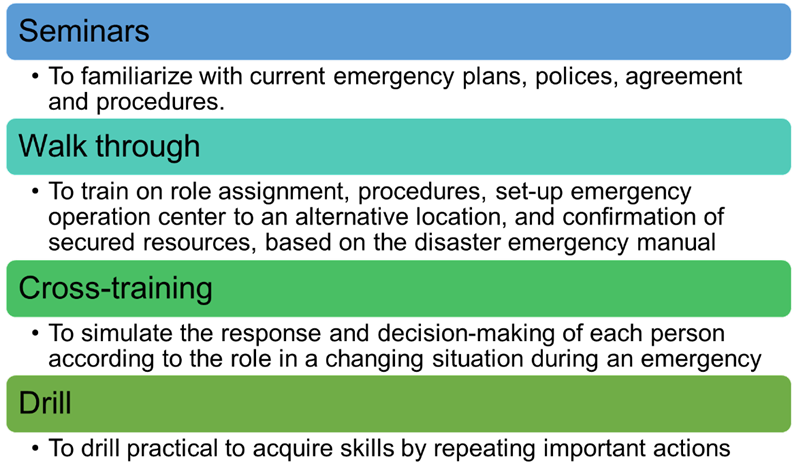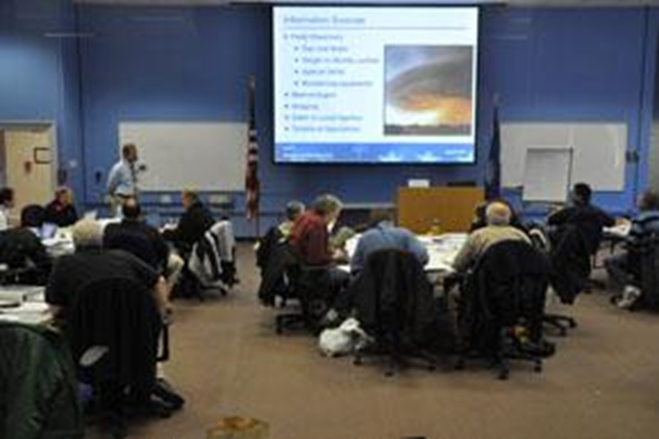
Disaster Management Manual
A manual for practitioners and decision makers!

Disaster Management Manual
A manual for practitioners and decision makers!
There is no debate about the necessity of training and exercises to enhance the ability to respond to disaster emergencies and other incidents. It is important to conduct various types of training and exercises according to the target and purpose, such as lectures, confirmation, and acquisition of response contents, decision making, and actual physical exercise. In this section, the details of "education and training" and "drills," which are conducted mainly for the purpose of understanding procedures and improving proficiency, will be described.
For education and training, it is important to provide various types of education and training according to the target and purpose, such as lectures to obtain the basic knowledge of response, training to confirm the contents and learn methods of response, and drill to acquire and improve response techniques. Figure 3.5.1.1 shows examples of implementation methods. The timing of implementation should be periodically (e.g., annually), or when there are significant changes in personnel due to system changes, personnel transfers, hiring, etc., and also when the business continuity plan is reviewed and improved.

There is no doubt that the successful management of emergencies, especially large or complex emergencies, requires well-trained personnel 1.
In emergency management, the following can be noted
(1) In addition to constant exposure to new threats and hazards, it is necessary to keep pace with new laws, standards, and guidelines.
(2) Although emergencies can have a significant impact, they occur infrequently or not at all, making it difficult to acquire these skills through on-the-job training.
(3) In some cases, the cooperation and collaboration required in emergencies are difficult to foster in daily work.
Therefore, it is necessary to conduct emergency management training to provide staff and managers with the knowledge, skills, and abilities necessary to fulfill their respective roles, responsibilities, and functions in an emergency. Figure 3.5.1.2 2 shows the photo of the emergency training cources at FEMA.

In order to evaluate the effectiveness of any of the education and training methods, it is necessary to clearly define the objectives and determine in advance the method to evaluate the degree of achievement. When planning training, it is most important to share the objectives and goals among the parties involved.